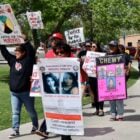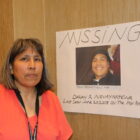Indigenous Affairs
Attorney general gets funding for proposed missing and murdered Indigenous people task force
|
This reporting was supported by the International Women’s Media Foundation’s Fund for Indigenous Journalists: Reporting on Missing and Murdered Indigenous Women, Girls, Two Spirit and Transgender People (MMIWG2T). Attorney General Raúl Torrez will have $200,000 at his disposal to create a new task force focused on the disproportionate rates at which Indigenous people experience violence and go missing. Gov. Michelle Lujan Grisham kept the funding allocated by lawmakers in the $10.2 billion state budget she approved today. It will be available in the next fiscal year starting in July, but it’s unclear if Torrez plans to use it.
The Legislature unanimously passed a memorial last month calling on him to convene a group made up primarily of tribal representatives, survivors and affected families, and law enforcement officials to update a state response plan delivered in 2022 and provide legislative proposals for confronting what’s been identified as a national crisis. But memorials, unlike bills, don’t have the force of law.
Torrez’s office hasn’t responded to New Mexico In Depth’s requests for comment about whether he plans to fulfill the Legislature’s request.
Lawmakers introduced Senate Joint Memorial 2 in response to Lujan Grisham’s quiet disbanding last year of a task force dedicated to finding solutions to the crisis.
The governor’s administration has argued the group finished its work and the state is now carrying forward its recommendations.


